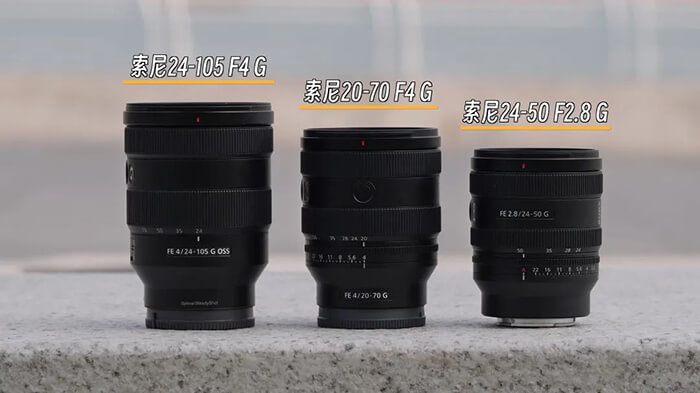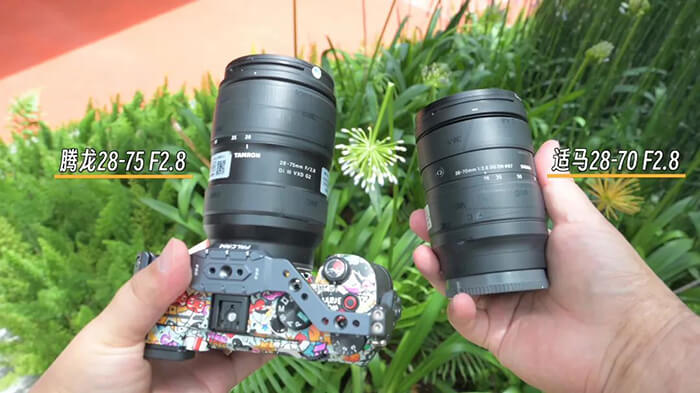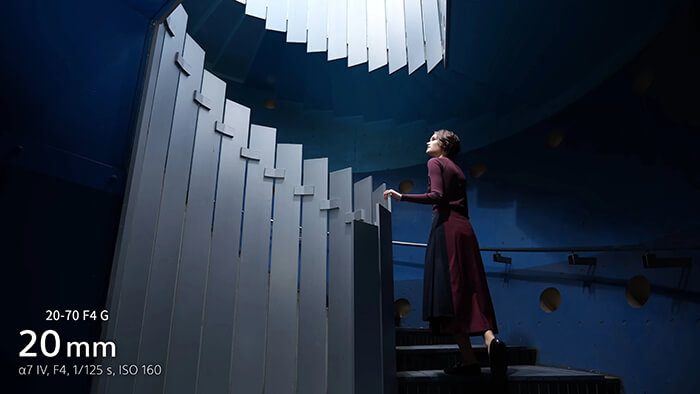During its expansion phase in earlier years, Sony's E-mount adopted a strategy of "recruiting talents from all over the world to achieve great things" in order to quickly increase the number of lenses in its lineup.

The open E-mount attracted two major third-party manufacturers, Tamron and Sigma, giving E-mount users more flexibility in lens selection.
In this issue, we recommend 5 full-frame standard zoom lenses for Sony E-mount priced around 5,000 yuan, hoping to help you quickly clarify your needs and make precise purchases.
First, let's take a look at the 5 selected lenses:
Sony's original 20-70 F4 G, 24-105 F4 G, and 24-50 F2.8 G;
Tamron's 28-75 F2.8 series and Sigma 28-70 F2.8 DG DN.

The reason we didn't choose higher-end lenses like the 24-70 GM is mainly because our budget for this issue is around 5,000 yuan, and we want to emphasize cost-effectiveness.
01 Lens Features
Let's quickly review the 5 selected lenses.
Sony's three original lenses are all part of the Black G series, focusing on maximizing cost-effectiveness.
We have used these three lenses for a long time and found that each has its own focus.
The 20-70 F4 G, as our main lens, has amazing sharpness, excellent image quality, and its wide-angle end can reach 20mm ultra-wide angle, which is quite practical.
It's very convenient for both product photography and daily portrait shooting.
The 24-50 F2.8 G stands out with its constant F2.8 large aperture. Although you might initially think the focal range is narrow, you'll find the 24mm~50mm range very practical for daily carry-around shooting.
The key feature of this lens is its compact size. Compared to professional-grade lenses like the 24-70 GM II, it feels less "intimidating" when carrying and shooting.
The 24-105 F4 G is considered a "perennial favorite" among Sony's original lenses. We joke that almost every professional photographer working with Sony has used it.
Although the 24-105 F4 G was released in 2017, it's still an excellent lens suitable for professional work.
Tamron and Sigma are represented by the 28-75 F2.8 series and 28-70 F2.8 respectively.

Why is Tamron's lens referred to as a "series"?
Because we found that the image quality difference between the 28-75 F2.8 and 28-75 F2.8 II is actually very small.
The 28-75 F2.8 II mainly features upgrades in body sealing, autofocus, and lens coating.
These two lenses from Tamron and Sigma are called "youth versions" of the original trinity by many users. Although their extreme image quality is not as good as the original, the constant F2.8 large aperture is still very attractive.
02 Applicable Scenarios
Let's dig deeper into the applicable scenarios for each of these 5 lenses.
Their focal ranges from 20mm to 105mm cover the most commonly used ranges by everyday users, which is why they are so popular.
At the wide-angle end, only Sony's original 20-70 F4 G can reach this range, which is why many professional photographers choose it.
For video shooting, if you enable stabilization cropping, the 28mm wide-angle end may be cropped to over 40mm, limiting indoor shooting, while 20mm can provide a wider shooting range.

Only the 24-105 F4 G surpass100mm at the telephoto end.
As a classic focal range, the 24-105 F4 G can quickly extend its focal length for candid shots at weddings, conferences, and other relatively large scenes.
For video shooting, the cropped focal length can easily reach over 150mm, making it convenient for shooting close-ups.
The 24-50 F2.8 G, 28-70 F2.8, and 28-75 F2.8 focus on the constant F2.8 large aperture.
The 24-50 F2.8 G is more oriented towards portability.
We use it with the A7C II body, which is very convenient for travel shooting and photographing children.
Many people are torn between choosing the 28-70 F2.8 and 28-75 F2.8, but the difference between these two lenses isn't significant.
If we have to distinguish, the Sigma 28-70 F2.8 is more lightweight with better color performance, but the image quality at the 70mm telephoto end is slightly soft.
The Tamron 28-75 F2.8 II excels in resolution across all focal ranges and has excellent close-up capabilities, but its handling feel and color are slightly inferior.
03 Suitable Users
If you prefer portability with a large aperture, you can consider the 24-50 F2.8 G and Sigma 28-70 F2.8.
If you need a practical lens for professional work, the Tamron 28-75 F2.8 II and Sony 24-105 F4 G are better choices.
If you shoot in small scenes frequently and have a rigid demand
for the wide-angle end of a standard zoom lens, the 20-70 F4 G is undoubtedly the first choice—unless you're willing to buy an additional ultra-wide angle lens and switch between them repeatedly.
Related Tags: Tamron Sony Standard Zoom Lens
